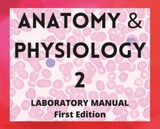
Laboratory manual for undergraduate Anatomy & Physiology 2
- Subject:
- Anatomy/Physiology
- Biology
- Health, Medicine and Nursing
- Material Type:
- Activity/Lab
- Reading
- Teaching/Learning Strategy
- Textbook
- Author:
- Julie Robinson
- Date Added:
- 07/30/2022

Laboratory manual for undergraduate Anatomy & Physiology 2
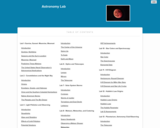
13 Labs with unique subjects. Does not include quizzes. Also available in Pressbooks (https://fscj.pressbooks.pub/astronomy/).
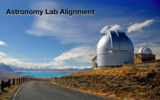
This is a list of 175+ publically available astronomy labs, aligned with chapters from Astronomy by Fraknoi, Morrison, and Wolff (from OpenStax). Alignment determined by list curators, not the lab authors.Resource developed as part of Lane Community College's Astronomy OER project. Resource is not affiliated with OpenStax.Image modified from public domain image "Mount Saitn John Observatory" by Bernard Stagg.

This is a learning "adventure" (i.e. interactive learning) for body tissues created for an Anatomy & Physiology 1 course. It can be modified for different concepts and is suitable for use in lecture, lab, or outside of class time as an independent assignment.
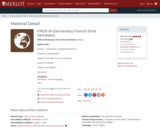
The following are included for each module Student’ learning outcomes, vocabulary items, cultural component, reading, grammatical structures, pronunciation, and audio transcripts ( to give instructors flexibility to use their own voice recording). Activities (and testing) proposed for each include: vocabulary, grammar exercises, cultural perspectives, reading comprehension. For each writing (French composition) and oral proficiency practice, there is a corresponding grading rubrics.
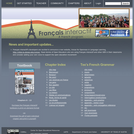
Français interactif is a unique, award-winning 1st-year French curriculum used by learners all over the world. Students explore French language and culture by following the lives of real students who have participated in the UT Summer Program in Lyon, France. The online curriculum includes over 320 videos, vocabulary and phonetics audio, online grammar reference with self-correcting exercises and audio dialogues, verb conjugation and practice tools, internet activities, and a textbook of classroom exercises. Franais interactif was awarded the 2009 CALICO Esperanto Access to Language Education Award and the National Endowment for the Humanities EDSITEment Best of Humanities on the Web award (2005)
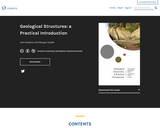
This manual is about structures that occur within the Earth’s crust. Structures are the features that allow geologists to figure out how parts of the Earth have changed position, orientation, size and shape over time. This work requires careful observation and measurements of features at the surface of the Earth, and deductions about what’s below the surface. The practical skills you will learn in this course form the foundation for much of what is known about the history of the Earth, and are important tools for exploring the subsurface. They are essential for Earth scientists of all kinds.
The course that this document supports is about doing structural geology. It’s not possible to be a good geologist (or to pass the course) just by learning facts. You have to be able to solve problems. Do your lab work conscientiously and get as much as possible done during lab sessions when instructors are available to help you.
This manual consists of both readings and lab exercises, which alternate through the text. The readings are designed to be read and understood outside the lab sessions, whereas the labs contain specific instructions and questions to be completed. Before each lab, be sure you have covered the readings that come immediately before it.
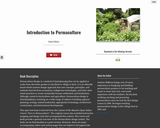
Short Description:
Welcome to this free eBook, “Intro to Permaculture”. The permaculture perspective has more resonance now than at any other time since the term ‘permaculture’ was coined in 1978. The Paris Climate Agreement of 2016 has the world admitting it needs to turn civilization onto a different road. Permaculture design has been scouting out that path for nearly 40 years, and now it’s time that the world sees some of what we have learned about living in cooperation with nature.This free introduction to permaculture is meant for the novice and the professional alike, with no prior experience necessary. For the person new to permaculture design and land stewardship, this book will provide a foundation from which to build upon with subsequent training, and introduce a new perspective that can be applied in many careers and facets of life. Data dashboard
Long Description:
Permaculture Design is a method of land planning that can be applied at scales from the home garden to city block to village to farm. It is an ethically based whole-systems design approach that uses concepts, principles, and methods derived from ecosystems, indigenous technologies, and other time-tested practices to create sustainable human settlements and institutions. Although rooted in horticulture and agriculture, Permaculture design is interdisciplinary, touching on a wide range of subjects including regional planning, ecology, animal husbandry, appropriate technology, architecture, social justice, and international development.
This open text book is derived from the content of the Massive Open Online Course “Intro to Permaculture”. The original course also included interactive mapping and design tools that accompanied this content. The course and book provide a general overview of the Permaculture design system. The book can be downloaded as a print version. However, there are many accompanying videos and content pages that are linked to throughout the text, so it is best viewed online where the links can be accessed.
Word Count: 15583
(Note: This resource's metadata has been created automatically by reformatting and/or combining the information that the author initially provided as part of a bulk import process.)
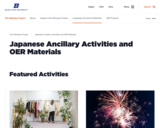
Language Activities & Materials from Boise State University Pathways Project. Leads to hub (https://www.oercommons.org/groups/pathways-project-oer-language-teaching-repository-/2388/7124/2968/). Licenses vary.
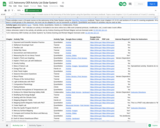
These activities cover a 10-week course on the astronomy of the Solar System using the OpenStax Astronomy textbook. Topics cover chapters 1-5, 6-13, and sections of 14 and 21 covering exoplanets. All activities are designed to be done in small groups in the classroom, but most can be adapted for use as homework or projects. Quantitative and Hands-on activities may be used as labs. Activity types: Tutorial, Article, Quantitative, Hands-on, Collaborative, Poster.
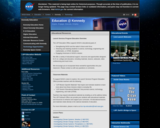
We offer a variety of educational support, resources and opportunities designed for K-12, college and educators, including materials, lessons, webcasts, video conferencing and much more. We encourage you to incorporate these wonderful opportunities into your classroom. Please contact us with any questions or comments. Teachers may request educational materials by emailing us at the address below. The LSP Outreach Office can provide your students with educational materials and resources to enhance and support your curriculum. All educational lessons and materials relate directly to the national standards of education. For more information, please e-mail us at ksc-lsp-education@mail.nasa.gov.
![Linear Regression (Excel) and Cellular Respiration for Biology, Chemistry and Mathematics [version 1.0]](https://oercommons.org/static/newdesign/images/materials/default-thumbnail-index.png)
Students typically find linear regression analysis of data sets in a biology classroom challenging. These activities could be used in a Biology, Chemistry, Mathematics, or Statistics course. The collection provides student activity files with Excel instructions and Instructor Activity files with Excel instructions and solutions to problems.
Students will be able to perform linear regression analysis, find correlation coefficient, create a scatter plot and find the r-square using MS Excel 365. Students will be able to interpret data sets, describe the relationship between biological variables, and predict the value of an output variable based on the input of an predictor variable.
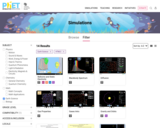
PhET provides fun, free, interactive, research-based science and mathematics simulations. We extensively test and evaluate each simulation to ensure educational effectiveness. These tests include student interviews and observation of simulation use in classrooms. The simulations are written in Java, Flash or HTML5, and can be run online or downloaded to your computer. All simulations are open source (see our source code). Multiple sponsors support the PhET project, enabling these resources to be free to all students and teachers.
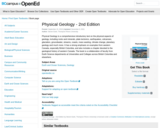
Physical Geology is a comprehensive introductory text on the physical aspects of geology, including rocks and minerals, plate tectonics, earthquakes, volcanoes, glaciation, groundwater, streams, coasts, mass wasting, climate change, planetary geology and much more.
It has a strong emphasis on examples from western Canada, especially British Columbia, and also includes a chapter devoted to the geological history of western Canada. The book is a collaboration of faculty from Earth Science departments at Universities and Colleges across British Columbia and elsewhere.
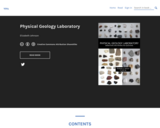
The purpose of this “book” is to help students practice skills to master learning objectives for physical geology laboratory. Includes H5P interactive exercises for students to self-test knowledge.
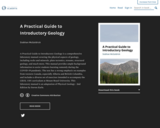
Short Description:
A Practical Guide to Introductory Geology is a comprehensive laboratory manual covering the physical aspects of geology, including rocks and minerals, plate tectonics, streams, structural geology, and much more. This manual provides ample background information to assist students learning remotely during the COVID-19 pandemic. The text has a strong emphasis on examples from western Canada, especially Alberta and British Columbia, and includes a diverse set of exercises intended to accompany the GEOL 1101 curriculum at Mount Royal University. This laboratory manual is an adaptation of Physical Geology - 2nd Edition by Steven Earle.
Word Count: 78266
ISBN: 978-1-55195-458-5
(Note: This resource's metadata has been created automatically by reformatting and/or combining the information that the author initially provided as part of a bulk import process.)

Students will be able to identify cognates and false cognates by playing a game of Kahoot and looking at different advertisements in Spanish.
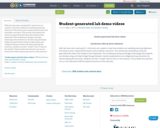
With lab class sizes reaching 20:1, instructors are unable to view how students are satisfying learning objectives. This leads to poor student performance and unrealistic outcomes. This activity was achieved by instructor generated lab videos that students then duplicated. This modeling technique leverages technology that students are already using and helps bridge the gap between industry expectations and college learning outcomes. By demonstrating the exercises, students can then “model” how it’s done in the industry. This provides the educator one on one interaction without physical presence of the educator.
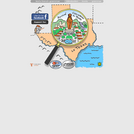
An online pedagogical reference grammar of the French language that combines authoritative grammar explanations, self-correcting exercises and online audio with surreal dialogues and cartoon images.
![Why does Blood Flow Change? Investigating the Math of Blood Flow Dynamics [version 1.0]](https://oercommons.org/static/newdesign/images/materials/default-thumbnail-index.png)
This collection of activities explores the relationship between blood flow, pressure, and the factors of resistance through graphs and modeling direct and inverse variation.